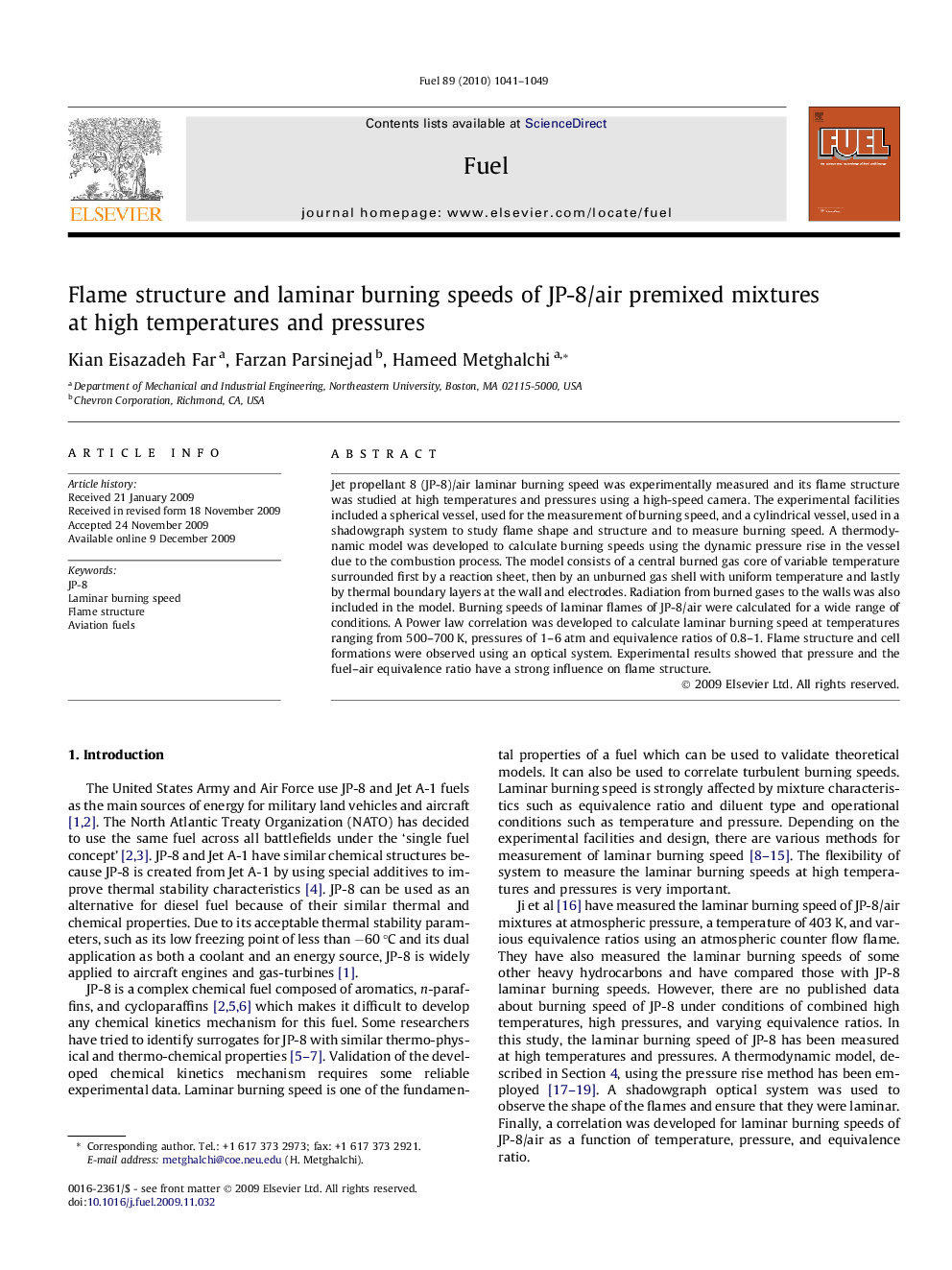| Article ID | Journal | Published Year | Pages | File Type |
|---|---|---|---|---|
| 207574 | Fuel | 2010 | 9 Pages |
Jet propellant 8 (JP-8)/air laminar burning speed was experimentally measured and its flame structure was studied at high temperatures and pressures using a high-speed camera. The experimental facilities included a spherical vessel, used for the measurement of burning speed, and a cylindrical vessel, used in a shadowgraph system to study flame shape and structure and to measure burning speed. A thermodynamic model was developed to calculate burning speeds using the dynamic pressure rise in the vessel due to the combustion process. The model consists of a central burned gas core of variable temperature surrounded first by a reaction sheet, then by an unburned gas shell with uniform temperature and lastly by thermal boundary layers at the wall and electrodes. Radiation from burned gases to the walls was also included in the model. Burning speeds of laminar flames of JP-8/air were calculated for a wide range of conditions. A Power law correlation was developed to calculate laminar burning speed at temperatures ranging from 500–700 K, pressures of 1–6 atm and equivalence ratios of 0.8–1. Flame structure and cell formations were observed using an optical system. Experimental results showed that pressure and the fuel–air equivalence ratio have a strong influence on flame structure.
